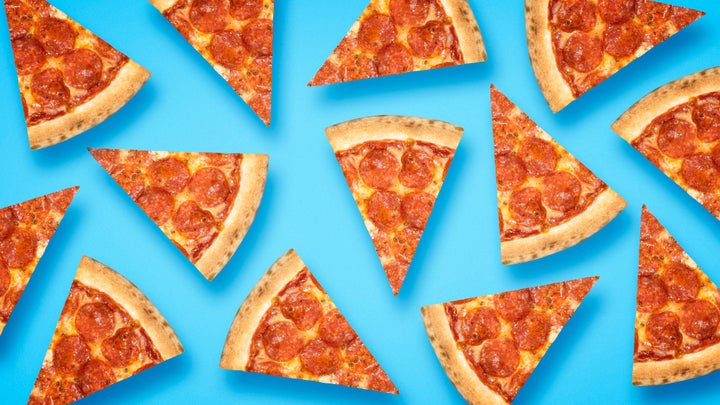
Detailing how much exercise is needed to burn off calories not only “demonises” food, it also oversimplifies nutrition, experts have told HuffPost UK.
The warnings come following a 2019 study led by Loughborough University suggested physical activity calorie equivalent (PACE) food labelling could help the nation select healthier food choices and tackle obesity.
The research found that when presented with labels such as “calories in this pizza require 45 minutes of running to burn”, participants cut around 200 calories from their daily intake.
But Nichola Ludlam-Raine, a British Dietetic Association spokesperson and registered dietitian, said this form of labelling can be “extremely problematic”, as it “portrays the idea that food needs to be earnt or burnt off”.
“This is not true because our bodies burn calories even at rest, and we all burn a different number of calories based on our age, gender, size and muscle mass,” she told HuffPost UK. “You don’t have to burn off or earn a pizza, but you do need to eat it within the context of a healthy and balanced diet across the week.”
Ludlam-Raine added that calories do not paint a full picture of the nutritional value of food. “For example, 200 calories of vegetables provides much more in the way of nutrients and fibre than 100 calories of biscuits, which provides a lot of added sugar. And that’s not to say that we can’t eat biscuits, it’s just we should eat them less often than vegetables.”
She pointed out that PACE labelling is also less inclusive than the current “traffic light” labelling, as not everyone can run and walk.
Dietician Dimple Thakrar echoed these sentiments, adding that the danger with something like this is that we “demonise certain foods as ‘bad’ foods”.
“[PACE] has huge potential to promote unhealthy relationships with food,” she said. “Nutrition is not black or white. While this will help people appreciate the impact of high calorie foods, without balanced educational messages, this may encourage distorted eating behaviours particularly in young teens.”
“This may encourage distorted eating behaviours particularly in young teens.”
- Dietician, Dimple Thakrar
This is something Tom Quinn, director of external affairs at the charity Beat, also believes would be an issue – he says labelling food with exercise details can be particularly triggering for those suffering from, or vulnerable to, eating disorders.
“We know that many people with eating disorders struggle with excessive exercising, so being told exactly how much exercise it would take to burn off particular foods risks exacerbating their symptoms,” he said. “Policy makers looking to incorporate this change need to consider the impact that it may have on people’s mental health.”
In the long-term, Ludlam-Raine has her doubts that PACE labelling would make that much difference, pointing out that the study was conducted in a lab setting, rather than in real-life. “People still smoke despite the horrific images that are now displayed on packets, which shows that people become immune to pictorial messages over time,” she said.
“Remember, you cannot out-run a bad diet. You can’t just live off chocolate and fizzy drinks as long as you run or walk enough, that simply isn’t healthy.”
Useful websites and helplines:
- Beat, Adult Helpline: 0808 801 0677 and Youthline: 0808 801 0711 or email help@beateatingdisorders.org.uk (adults) fyp@beateatingdisorders.org.uk (youth support)
Samaritans, open 24 hours a day, on 116 123
Mind, open Monday to Friday, 9am-6pm on 0300 123 3393